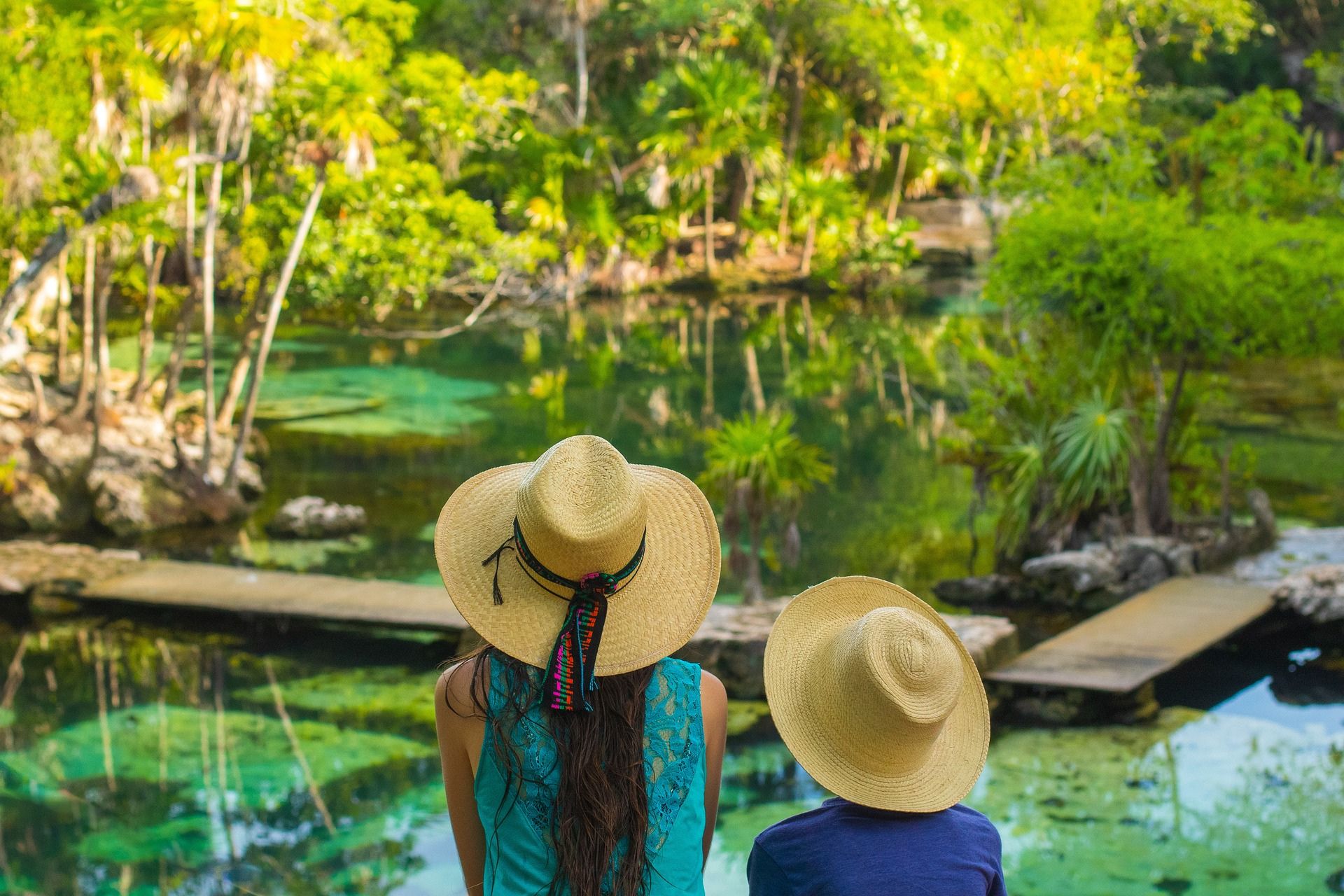
Cenotes of Mexico,
Natural Wonders of the World
A cenote is a natural sinkhole filled with fresh water. They were formed when the limestone bedrock of the Yucatán Peninsula collapsed into the fresh groundwater. With its extensive underground river systems, Mexico’s Yucatán Peninsula is the best place to experience and explore cenotes.
These unique formations are a testament to the power of nature. They are also sacred to the Mayan people, who believed cenotes were openings to the underworld. Today, cenotes are a popular tourist destination for people of all ages who want to experience the beauty and mystery of these natural wonders.
There are over 3,000 natural cenotes in Mexico, mainly covered by the Chicxulub crater, which formed after the meteorite impact that wiped out the dinosaurs.
The word “cenote” is of Mayan origin, meaning “well.” They played a crucial role in the development of the Mayan civilization, as they were the primary water source in the Yucatán Peninsula, which has few rivers and lakes. Consequently, Mayan settlements were built near cenotes, such as Chichen Itza and Tulum.
The Mayans believed that cenotes were openings to the underworld. This is easy to see why, as diving into a cenote reveals a new world of interconnected underground rivers with stalactites and stalagmites in the turquoise water.
Many of Yucatan’s cenotes contain the remains of offerings to the gods. For example, in the Sacred Cenote of Chichen Itza (Cenote Sagrado), the Mayans paid tribute to the god of rain, Chac. Over fifty bodies of warriors and young virgins were recovered from its waters, along with gold jewelry.
Today, the cenotes are a popular tourist attraction in Mexico, with divers eager to explore their depths. Most cenotes are free to visit, but some privately owned cenotes require an entrance fee.
Here are some of the things you can do in a cenote:
- Snorkel or dive: Cenotes are a great place to snorkel or scuba dive because the clear water lets you see to the bottom.
- Swimming: Cenotes are also a great place to swim; the water is cool and refreshing.
- Explore the cave systems: Some cenotes have connected cave systems that you can explore.
- Learn about Mayan culture: Cenotes are an integral part of Mayan culture, so during your visit, you can learn about the Mayans and their beliefs.
- If you want a unique and unforgettable experience, a cenote tour is for you. So what are you waiting for? Start planning your trip today!
Before you go:
Cenote hopping is a popular tourist activity in Mexico, especially in Yucatan. It is often difficult to find information about specific cenotes, their location, hours of operation, and entrance fees, if any. This website addresses this issue and provides a starting point for exploring these unique formations.
- Remember that some cenotes can be dangerous for inexperienced divers. You must dive carefully; if you can’t, choose to snorkel or swim.
- Consider hiring a guide who knows the area.
- Do not wear sunscreen in the water; it can harm aquatic life.
- Do not grab or pull speleothems and try not to touch the sediments while diving.
